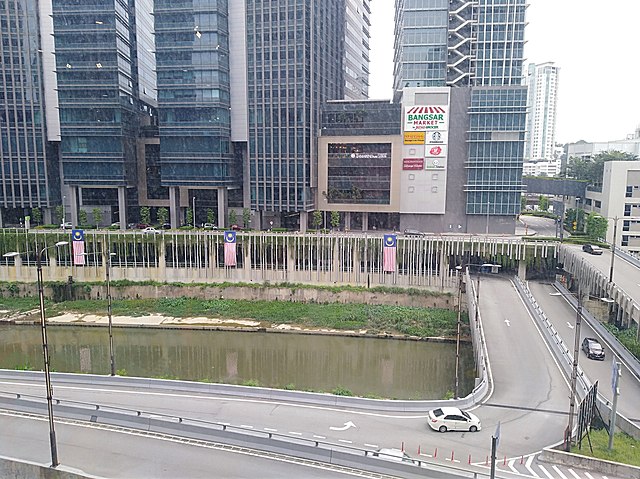Top Qs
Timeline
Chat
Perspective
KL Eco City
Mixed Development in Kuala Lumpur in Malaysia From Wikipedia, the free encyclopedia
Remove ads
KL Eco City, or KLEC for short, is a 25-acre integrated mixed-use development project in the city of Kuala Lumpur, Malaysia.[1] The project is built at the site of former Haji Abdullah Hukum Village. The mixed development project is helmed by S P Setia Berhad under a joint-venture agreement with the Kuala Lumpur City Hall (DBKL).[2] It is built in stages comprising 3 residential towers, one serviced apartment tower, 3 corporate office towers, 12 boutique office blocks and a retail mall.[3]
This article needs additional citations for verification. (May 2024) |

Remove ads
Master plan
- Amari Hotel
- KL Eco City Integrated Rail Hub (LRT & KTM Abdullah Hukum stations)
- Retail Podium (KL Eco City Mall)
- Masjid Jamek Abdullah Hukum
- Mercu Aspire (Aspire Tower)
- Mercu 2 Corporate Tower (formerly Setia Tower)
- Mercu 3 Corporate Tower (formerly Menara DBKL)
- Strata Office Tower (Menara 1)
- The Pillars Boutique Office (BO1/2/3)
- ViiA Residences
- Residensi Vogue 1 (Vogue Suites One)
- Vogue Suites Two
- Vogue Suites Three

Remove ads
Background and history
Summarize
Perspective
The Haji Abdullah Hukum Village was an urban village located in Kuala Lumpur, Malaysia. It was situated further south along Jalan Bangsar, between the Rapid KL Kelana Jaya Line station named after the village (See: Abdullah Hukum LRT station and Abdullah Hukum Komuter station) and the Klang River. Its area is surrounded by Bangsar, Mid Valley City and Kerinchi.
History of the village
Haji Abdullah Hukum Village was one of Kuala Lumpur's early Malay settlements, with a 200-year-old history.
The village was named after Haji Abdullah Hukum, whose given name was Muhammad Rukun Hukum. He came to Malaya from Sumatera, Indonesia at the age of 15 with his father back in the 19th century. To earn a living, he worked as a farmer and a laborer before he started opening lands and villages with the consent of Raja Laut, who was then the Raja Muda (crown prince) of Selangor.
Abdullah was later chosen by Raja Laut to head a mosque in Pudu. He was also given the authority to start a nursery in Bukit Nanas and to open a village in Sungai Putih (now Jalan Bangsar). After retiring, he continued to stay in the village in Sungai Putih which is now known as Haji Abdullah Hukum Village located just opposite the well known Mid Valley Megamall in Kuala Lumpur.
Despite initially starting as a Malay settlement, the village boasts a multiracial population of ethnic Malays, Chinese and Indians. There is even a Hindu temple, Sri Sakthi Nageswary Temple, located within the village close by a highway overpass.
Development

In 2007, it was reported that the 200-year-old Haji Abdullah Hukum Village has been earmarked for development. The village has been marked for a major development comprising numerous condominiums, office blocks, shopping complexes and even a transit hub.[4][5][6]
Remove ads
Accidents and Incidents
On the 30th of November 2016, a 70-meter long pedestrian bridge linking the complex to the Gardens Mall that was under construction collapsed at around 3:30pm local time. The collapse killed a Vietnamese construction worker and injured 6 others. All of the injured were treated at University of Malaya Medical Centre. Following the collapse of the bridge, the department has instructed a stop-work order at the construction site to allow investigations to take place.
Public transportation
KL Eco City is served by the KD01 KJ17 Abdullah Hukum on the 2 KTM Tanjung Malim-Port Klang Line and 5 LRT Kelana Jaya Line.
A pedestrian link bridge connects KL Eco City and Mid Valley City, where commuters can also access the KB01 Mid Valley station on the 1 KTM Batu Caves-Pulau Sebang Line.
See also
References
External links
Wikiwand - on
Seamless Wikipedia browsing. On steroids.
Remove ads




